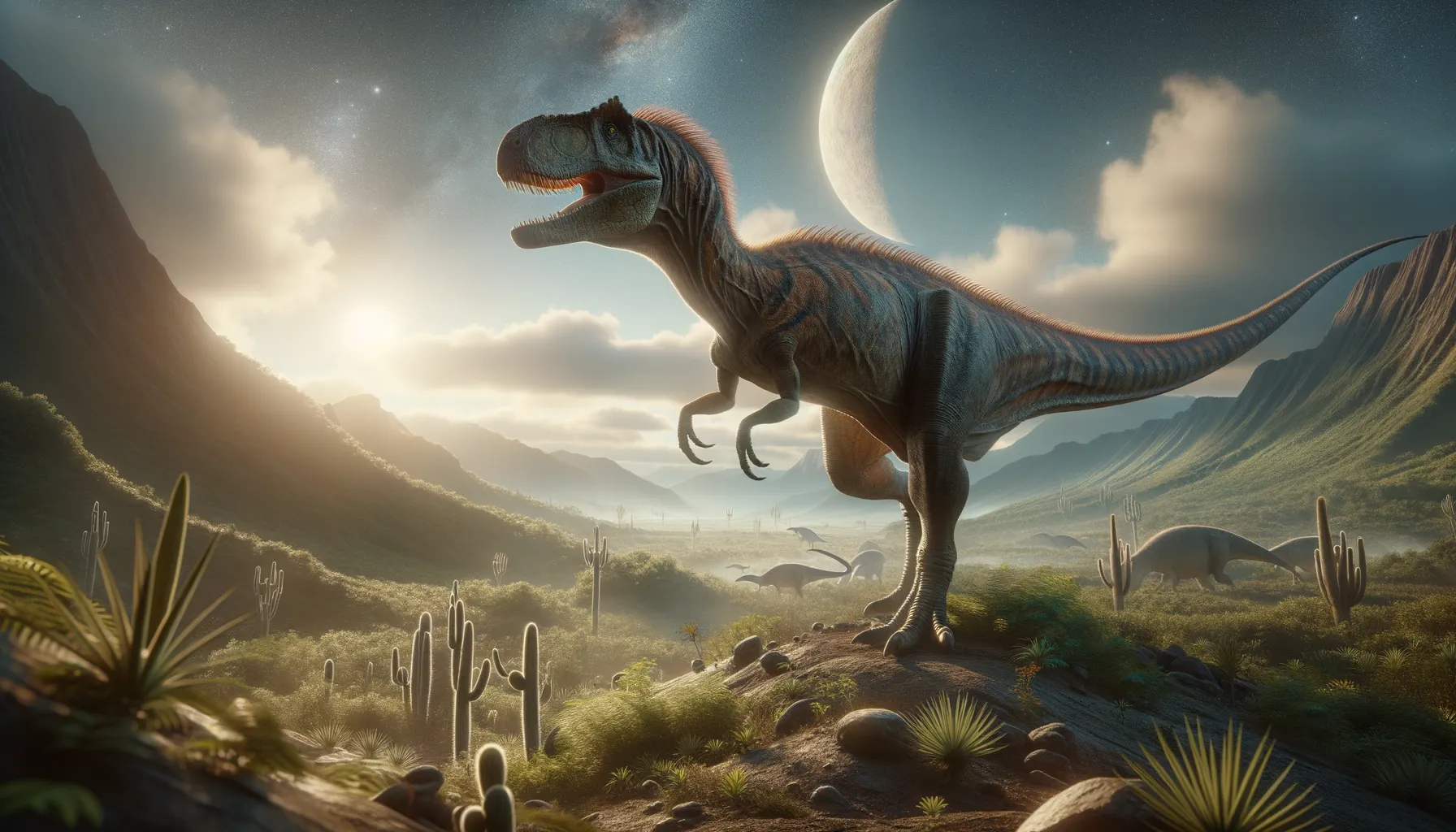
Eoabelisaurus
A glimpse into ancient Jurassic predators.
Period
Jurassic
Length
About 6 meters long.
Height
Approximately 1.5 meters tall at the hip.
Weight
Estimated at around 500 kilograms.
Eoabelisaurus, an early relative of the more famous abelisaurids, was a carnivorous dinosaur that roamed what is now South America during the Middle Jurassic period. Its discovery has provided valuable insight into the evolution of the Abelisauridae family. With features that indicate a transition between early theropods and later abelisaurids, Eoabelisaurus hints at the rich diversity of predatory dinosaurs during this era.
Diet
Eoabelisaurus was a carnivore, preying on small to medium-sized dinosaurs and other animals. Its diet likely included both contemporary herbivorous dinosaurs and any smaller reptiles it could overpower.
Hunting
With a build suitable for ambushing, Eoabelisaurus relied on surprise and short bursts of speed. Its hunting strategy involved using its strong jaws and teeth to capture and incapacitate its prey quickly.
Environmental challenges
During the Jurassic period, Eoabelisaurus faced a dynamic environment with evolving flora and fauna. Competition with other predators would have influenced its feeding behavior. Additionally, changing climates could have affected its prey availability, prompting adaptation over generations.
Speed
Moderate, suited for short bursts.
Lifespan
Likely around 10-20 years.
First discovery
Found in 2012 in the Patagonian region of Argentina.
Fun Facts
- Eoabelisaurus was a theropod dinosaur that lived around 170 million years ago during the early Jurassic period.
- It was discovered in Argentina, making it part of the rich dinosaur history of South America.
- Eoabelisaurus is considered an important find because it helps fill a gap in the evolution of theropods, particularly abelisaurids.
- This dinosaur was relatively small compared to its later relatives, estimated to be about 6 meters long.
- Unlike more advanced abelisaurids, Eoabelisaurus had longer arms, indicating an evolutionary transition.
- Its name combines 'Eo', meaning 'dawn', with 'Abelisaurus', highlighting its position at the dawn of abelisaurid evolution.
- The discovery of Eoabelisaurus has provided paleontologists with key insights into the diversity and adaptation of early theropods.
Growth and Development
Eoabelisaurus likely experienced rapid growth during its early years, similar to other theropods. Fossil evidence suggests a potentially active lifestyle that facilitated muscle and skeletal development. Nutrient availability and environmental conditions would have played roles in its growth patterns.
Habitat
Eoabelisaurus inhabited a diverse landscape that included forests, floodplains, and open areas. This environment offered a variety of prey and concealment options, enabling it to thrive. Seasonal climate variations might have also influenced its habitat choices.
Interaction with other species
As a mid-sized predator, Eoabelisaurus competed with other carnivorous dinosaurs. It may have scavenged from larger predators' kills when the opportunity arose. Interactions with herbivores were primarily predatory, with Eoabelisaurus likely targeting the vulnerable in herds.
Natural lifespan
Eoabelisaurus lived up to around 20 years under natural conditions.
Reproduction
Like other theropods, Eoabelisaurus reproduced by laying eggs. It is likely that they built nests and may have exhibited some level of parental care, guarding the nests until the young hatched. Fossil evidence from related species suggests clutch sizes varied.
Social behaviour
Eoabelisaurus behavior is thought to be primarily solitary or in pairs, especially during breeding seasons. Displays of aggressive behavior likely occurred during competition for mates or territory.
Fossil locations
Eoabelisaurus fossils were discovered in the Patagonia region of Argentina. These finds have provided significant insights into early theropod development in the Southern Hemisphere, underscoring the varied distribution of dinosaur species during the Jurassic period.
